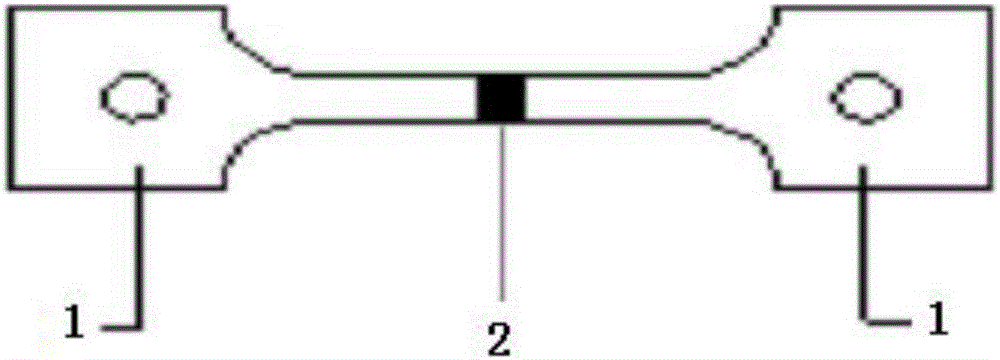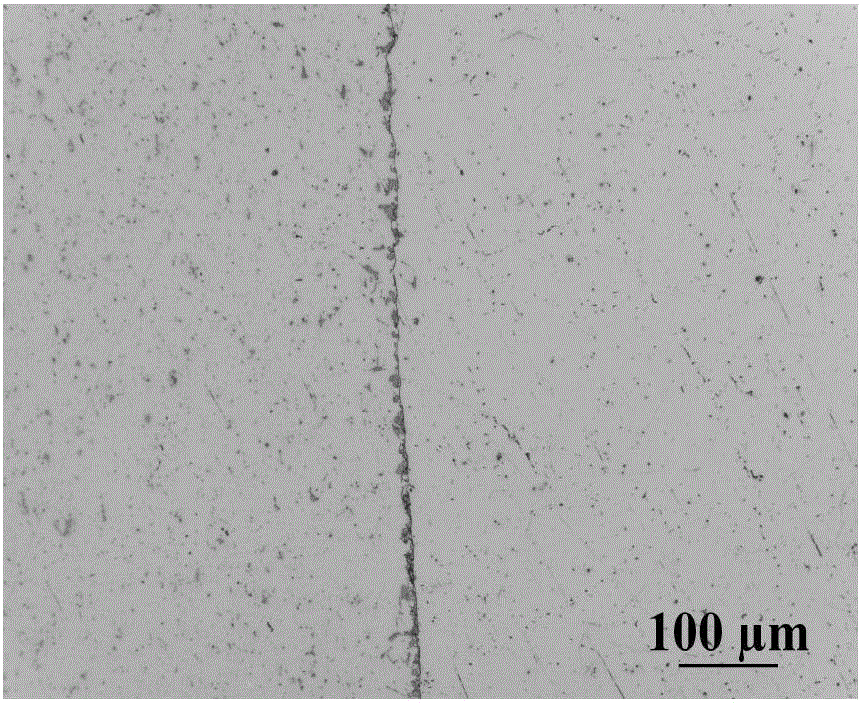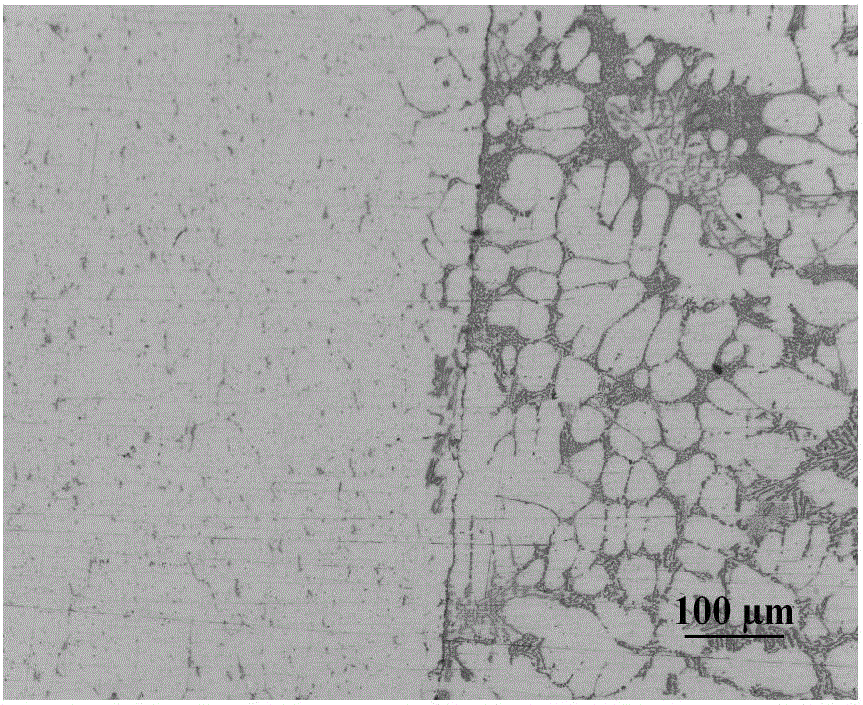Solid-liquid connecting method for aluminum-aluminum metal
A connection method and aluminum metal technology, applied in metal processing equipment, casting molding equipment, casting molds, etc., can solve problems affecting the performance of interactive joints, composition segregation, etc., to avoid oxidation slag inclusions, small constraints, and solve surface problems. The effect of the problem of oxide film
- Summary
- Abstract
- Description
- Claims
- Application Information
AI Technical Summary
Problems solved by technology
Method used
Image
Examples
Embodiment 1
[0028] An aluminum-aluminum connection method related to this embodiment includes the following steps:
[0029] Step 1. Nickel plating is performed on the 6061 plate to be connected, and the thickness of the nickel layer is 5 μm;
[0030] Step 2, melting and refining the cast 6061 to be poured;
[0031] Step 3, presetting the nickel-plated 6061 plate obtained in step 1 in the mold cavity;
[0032] Step 4. Using the metal mold casting method, pour liquid 6061 aluminum into the cavity of the mold at 720°C to form a metallurgical bond between aluminum and aluminum, that is, to complete the solid-liquid connection of aluminum-aluminum metal.
[0033] figure 2 It is the metallographic diagram of the 6061 plate and the as-cast interface area under this condition. From the figure, it can be observed that there are no defects such as oxidized slag inclusions, gas absorption, and hot cracks in the bonding area; a metallurgical bond is formed between the two materials, and the interf...
Embodiment 2
[0035] This embodiment relates to a solid-liquid connection method for an aluminum alloy, and the specific scheme is the same as that of Embodiment 1, except that:
[0036] In step 1, the thickness of the nickel layer is 1 μm;
[0037] The casting temperature in step 4 is 680°C.
[0038] The results show that under this condition, after the solid-liquid combination of solid 6061 aluminum alloy and 6061 cast aluminum alloy, there are no defects such as oxidized slag inclusions, gas absorption, thermal cracking, etc. in the bonding area; there is no obvious interface between the two aluminum alloys, forming a Metallurgical bonding, using the surface protection zinc layer to solve the problem that the oxide film hinders the formation of metallurgical bonding. After tensile test, the connection strength is 135MPa.
Embodiment 3
[0040] This embodiment relates to a solid-liquid connection method for an aluminum alloy, and the specific scheme is the same as that of Embodiment 1, except that:
[0041] In step 1, the thickness of the nickel layer is 10 μm;
[0042] The casting temperature in step 4 is 750°C.
[0043] The results show that under this condition, after the solid-liquid combination of solid 6061 aluminum alloy and 6061 cast aluminum alloy, there are no defects such as oxidized slag inclusions, gas absorption, thermal cracking, etc. in the bonding area; there is no obvious interface between the two aluminum alloys, forming a Metallurgical bonding, using the surface protection zinc layer to solve the problem that the oxide film hinders the formation of metallurgical bonding. After tensile test, the connection strength is 145MPa.
PUM
| Property | Measurement | Unit |
|---|---|---|
| thickness | aaaaa | aaaaa |
| strength | aaaaa | aaaaa |
| strength | aaaaa | aaaaa |
Abstract
Description
Claims
Application Information
 Login to View More
Login to View More - R&D
- Intellectual Property
- Life Sciences
- Materials
- Tech Scout
- Unparalleled Data Quality
- Higher Quality Content
- 60% Fewer Hallucinations
Browse by: Latest US Patents, China's latest patents, Technical Efficacy Thesaurus, Application Domain, Technology Topic, Popular Technical Reports.
© 2025 PatSnap. All rights reserved.Legal|Privacy policy|Modern Slavery Act Transparency Statement|Sitemap|About US| Contact US: help@patsnap.com



